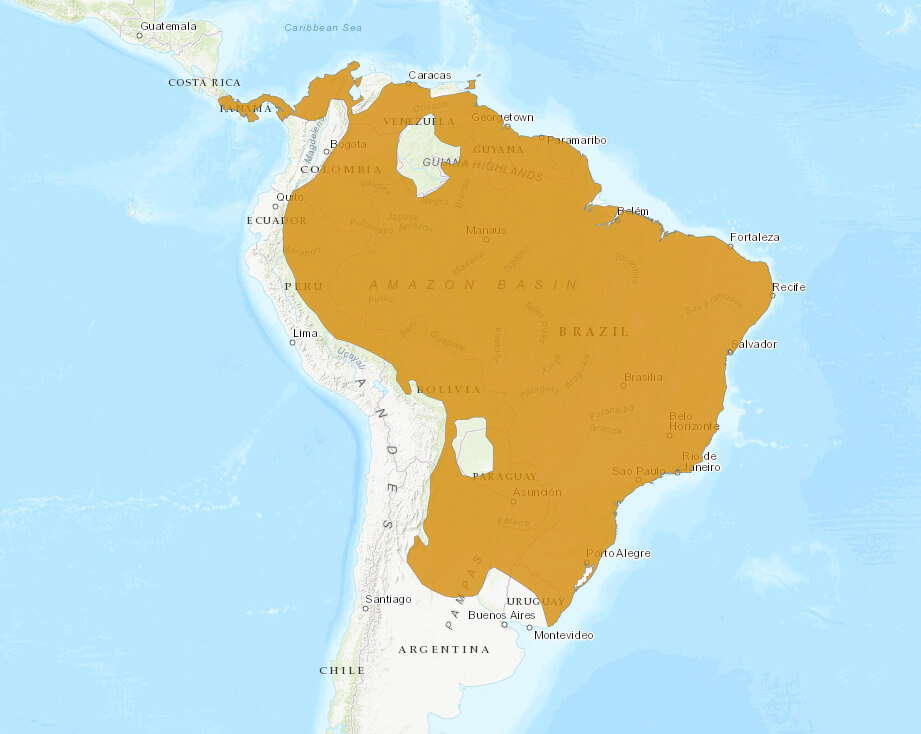Crab-eating Raccoon
Procyon cancrivorus
©Adriano Gambarini
Taxonomy
Standard English Name
Crab-eating Raccoon
Scientific Name
Procyon cancrivorus
Brazilian common name/s
Mão-Pelada, Guaxinim
Conservation status - IUCN
Physical Description
Raccoons are widely used as cartoon characters. They have a total length of 60 to 100 cm and weigh from 2 to 12 kg. The coat is dense, with gray almost black colouring, sometimes with red or brown tones. It has a black mask around the eyes and a curly tail, which are the main characteristics of the species. The feet have long toes, with very short hair, which led to them being called “bare-foot” (Mão-pelada) in Brazil. It has well developed tactile sense and uses its hands regularly in a similar fashion to monkeys – food is usually broken in the hands and then placed in the mouth.
Ecology and Habitat
They occur throughout Latin America, east of Costa Rica and Peru to Uruguay. Raccoons display predominantly nocturnal activity and are good climbers and swimmers.
It is considered omnivorous, and their diet consists of crustaceans, fruits, insects and other arthropods, and occasionally small vertebrates and fish.
Gestation lasts 60 to 63 days, with 1 to 7 young. The mother keeps the offspring in a hollow tree until they are 7 to 9 weeks old. After which, the young accompany their mother on short outings, and after 12 weeks, they leave the nest.
Online links
IUCN redlist (http://www.iucnredlist.org) presents a synthesis of current knowledge about distribution and conservation status.
References
Emmons, L. H., & Feer, F. (1997). Neotropical rainforest mammals: a field guide. Chicago: University of Chicago Press.
Gatti, A., Bianchi, R., Rosa, C. R. X., & Mendes, S. L. (2006). Diet of two sympatric carnivores, Cerdocyon thous and Procyon cancrivorus, in a restinga area of Espirito Santo State, Brazil. Journal of Tropical Ecology, 22, 227-230.
Michalski, F., & Peres, C. A. (2005). Anthropogenic determinants of primate and carnivore local extinctions in a fragmented forest landscape of southern Amazonia. Biological Conservation, 124, 383-396.
Reid, F., & Helgen, K. (2008). Procyon cancrivorus. In: IUCN 2010. IUCN Red List of Threatened Species. Version 2010.2. <www.iucnredlist.org>. Downloaded on 03 July 2010.
Yanosky, A. A., & Mercolli, C. (1993). Activity pattern of Procyon cancrivorus (Carnivora, Procyonidae) in Argentina. Revista de Biologia Tropical, 41, 157-159.
dos Santos, M. D., & Hartz, S. M. (1999). The food habits of Procyon cancrivorus (Carnivora, Procyonidae) in the Lami Biological Reserve, Porto Alegre, Southern Brazil. Mammalia, 63, 525-530.
